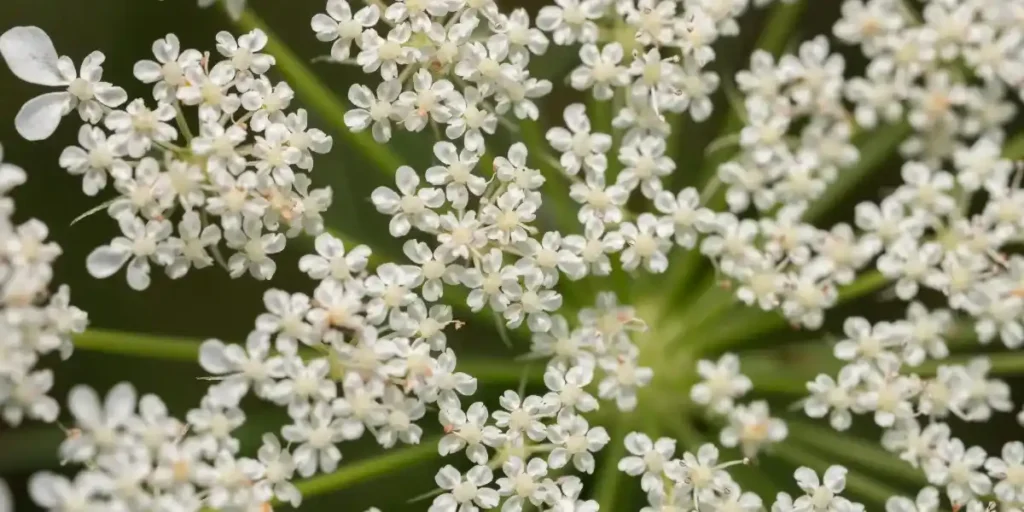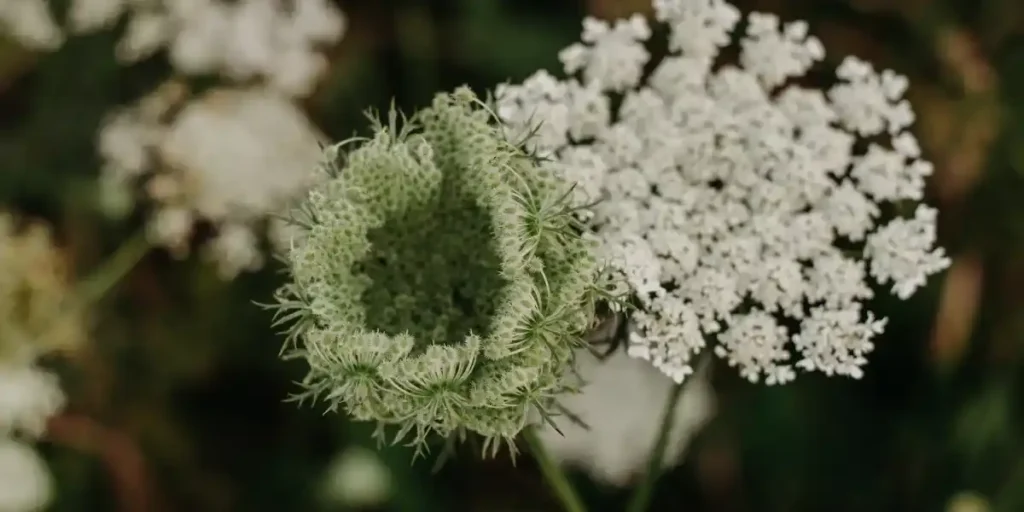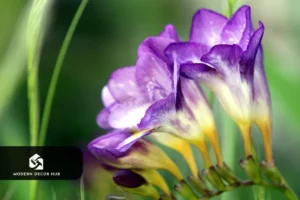Introduction
Have you ever spotted a beautiful, lacy white flower growing wild and wondered, “Is Queen Anne’s Lace toxic?” You’re not alone. This delicate plant, also known as Daucus carota, has a charming appearance that makes it easy to admire — but many people worry about whether it could be dangerous for humans or animals.
The truth is, Queen Anne’s Lace is toxic in certain situations, but it’s mostly safe if you know what you’re doing. It’s one of those plants that look innocent yet demands caution because it shares its appearance with some very toxic look-alikes, like poison hemlock.
In this guide, we’ll answer questions like:
- Is Queen Anne’s Lace toxic to cats, dogs, horses, or cattle?
- Which parts are safe to eat?
- How to identify it correctly to avoid mistakes?
By the end of this article, you’ll feel confident spotting, handling, and even foraging Queen Anne’s Lace without any fear. And don’t worry — we’ll make it simple, fun, and easy to understand.
Botanical Facts & Appearance
Before worrying about toxicity, it’s important to know what Queen Anne’s Lace really looks like.
- Scientific Name: Daucus carota
- Common Names: Wild carrot, bird’s nest, bishop’s lace
- Appearance: A tall plant with feathery leaves, delicate white flowers in a flat-topped cluster, and a rough, hairy green stem.
One easy way to remember it is: the flowers look like a tiny lace doily on top of a thin green stalk. It blooms in summer and is often seen growing along roadsides or in fields.
Even though it’s beautiful, remember: looks can be deceiving. Some plants that look very similar — like poison hemlock — are highly toxic. That’s why knowing the appearance is the first step before handling or foraging.
Toxicity Facts
So, let’s tackle the main question: Is Queen Anne’s Lace toxic?
Is Queen Anne’s Lace Toxic to Humans?
For most people, Queen Anne’s Lace is not dangerously toxic. You might experience mild skin irritation if you touch the plant too much, especially the sap. Some sources also warn that consuming large amounts of the roots, seeds, or leaves without proper identification could lead to stomach upset.
The biggest danger comes from confusing it with poison hemlock, which is deadly if ingested. That’s why proper identification is absolutely critical.
Is Queen Anne’s Lace Toxic to Cats and Dogs?
Pet owners often ask: “Is Queen Anne’s Lace toxic to cats or dogs?”
- Cats and dogs are generally safe around this plant, but eating large quantities could cause mild digestive upset.
- If your pets nibble on the flowers or leaves occasionally, there’s no major risk.
- However, avoid letting them chew on the roots or seeds unless you are certain it’s the safe wild carrot and not a toxic look-alike.
So yes, the plant is mostly safe, but caution is still recommended.
Is Queen Anne’s Lace Toxic to Horses and Cattle?
Farmers and horse owners might wonder: “Is Queen Anne’s Lace toxic to horses or cattle?”
- Horses can generally graze on small amounts without harm.
- Cattle may also nibble on it safely, but large consumption is not advised, especially in areas where poison hemlock grows nearby.
- As with all livestock, monitoring grazing areas is key. Queen Anne’s Lace is toxic only if mistaken for a harmful look-alike.
Identifying Queen Anne’s Lace
Knowing how to correctly identify Queen Anne’s Lace is critical to avoid accidental poisoning. Here’s how to tell it apart from its dangerous look-alikes:
Queen Anne’s Lace vs Poison Hemlock
- Stem: Queen Anne’s Lace has a hairy green stem; poison hemlock has a smooth stem with purple blotches.
- Leaves: Queen Anne’s Lace leaves are feathery and carrot-like; poison hemlock leaves are shinier and more delicate.
- Flowers: Both have white flowers, but poison hemlock tends to have a more umbrella-like cluster.
Queen Anne’s Lace vs Wild Carrot
- Interestingly, wild carrot is closely related to Queen Anne’s Lace.
- Roots are edible and taste like carrots, but only if identified correctly.
Pro Tip: Always look for a tiny purple flower in the center of the flower cluster — it’s a signature feature of Queen Anne’s Lace.
Edible & Foraging Guide
Once you’ve identified it correctly, you might wonder: “Can I eat Queen Anne’s Lace?”
- Roots: Young roots are edible and taste like carrots. Older roots get woody and bitter.
- Leaves: Can be used sparingly in salads or soups.
- Seeds: Traditionally used for herbal remedies, but use with caution.
Safe Foraging Tips
- Never pick near roadsides or contaminated areas.
- Always double-check the plant against poison hemlock.
- Start with small amounts to test for sensitivity.
- Avoid feeding pets unless you’re certain it’s safe.
Queen Anne’s Lace is toxic mainly when misidentified — proper foraging knowledge eliminates most risks.
Common Mistakes & Risks
Even experienced foragers make mistakes. Here’s what to avoid:
- Confusing look-alikes: The biggest risk is poison hemlock.
- Over-harvesting: Taking too much can harm the local ecosystem.
- Ignoring skin reactions: Some people develop rashes or mild dermatitis from handling the plant.
By keeping these risks in mind, you can safely enjoy the plant’s beauty and benefits.

Gardening Tips & Uses
If you’re thinking about planting Queen Anne’s Lace in your garden, here’s what you need to know. This plant is not just beautiful—it can also attract pollinators and add a natural charm to your yard.
- Planting: Queen Anne’s Lace prefers full sun and well-drained soil. You can scatter seeds in late spring for a summer bloom.
- Growth: The plant can grow up to 3 feet tall with a wide flower cluster. It’s hardy and low-maintenance, but it can spread quickly if not monitored.
- Invasive Considerations: While it’s lovely, remember that Queen Anne’s Lace is toxic to some look-alikes, so don’t let it crowd out other plants. Pruning or pulling seedlings helps control spread.
- Companion Planting: It pairs well with wildflowers and attracts beneficial insects like bees and butterflies.
Gardening with Queen Anne’s Lace is a balance between beauty and responsibility. Keep an eye on it, enjoy the blooms, and make sure your pets don’t snack on unknown plants nearby.
Medicinal & Herbal Benefits
Believe it or not, Queen Anne’s Lace isn’t just eye candy—it has a long history of herbal uses.
- Roots: Traditionally used for digestive issues, the young roots can support mild diuretic needs.
- Seeds: Sometimes used in herbal medicine for their potential effects on digestion and inflammation.
- Leaves: Can be applied externally for minor skin irritations (though patch testing is important).
Remember, while Queen Anne’s Lace is toxic when misidentified, responsible use and knowledge make it a safe addition to natural remedies. Always double-check the plant and consult herbal guidance before trying any medicinal use.
FAQs Section
Here are some of the most common questions people ask about this delicate plant:
Is Queen Anne’s Lace toxic to children?
Generally, no. Small contact is safe, but children should not eat the plant unless it’s properly identified. Skin irritation is the main concern.
How to tell if Queen Anne’s Lace is poisonous?
Check the stem and leaves. A hairy green stem with feathery leaves usually indicates Queen Anne’s Lace, while smooth stems with purple blotches are poison hemlock, which is deadly.
Can you eat the flowers or seeds?
Yes, but cautiously. Young roots are safest for eating. Flowers and seeds are mostly used for herbal purposes. Always avoid eating anything if you’re unsure.
Is Queen Anne’s Lace toxic to cats, dogs, horses, or cattle?
- Cats & Dogs: Mild digestive upset if eaten in large amounts, otherwise generally safe.
- Horses & Cattle: Safe in small amounts; avoid accidental ingestion of look-alikes.
- Bottom line: The plant is mostly safe but Queen Anne’s Lace is toxic when confused with other similar-looking plants.
Conclusion & Safety Advice
So, is Queen Anne’s Lace toxic? The short answer: it’s mostly safe, but it comes with caution. Here’s a quick recap:
- Human Safety: Minor skin irritation is possible, but generally safe if identified correctly.
- Pets & Livestock: Small amounts are fine, but avoid accidental consumption of look-alikes.
- Edible Uses: Young roots are tasty and safe, flowers and seeds for herbal use only.
- Gardening & Foraging: Enjoy the beauty and benefits, but control spread and double-check plant ID.
Queen Anne’s Lace is toxic only when mistaken for a dangerous plant like poison hemlock. Knowledge, caution, and proper identification are your best friends here. With that, you can safely enjoy the lacy flowers, foraging adventures, and even herbal uses without worry.
Remember, every plant has its secrets, and Queen Anne’s Lace is a safe, beautiful, and surprisingly useful wild companion if handled responsibly.




